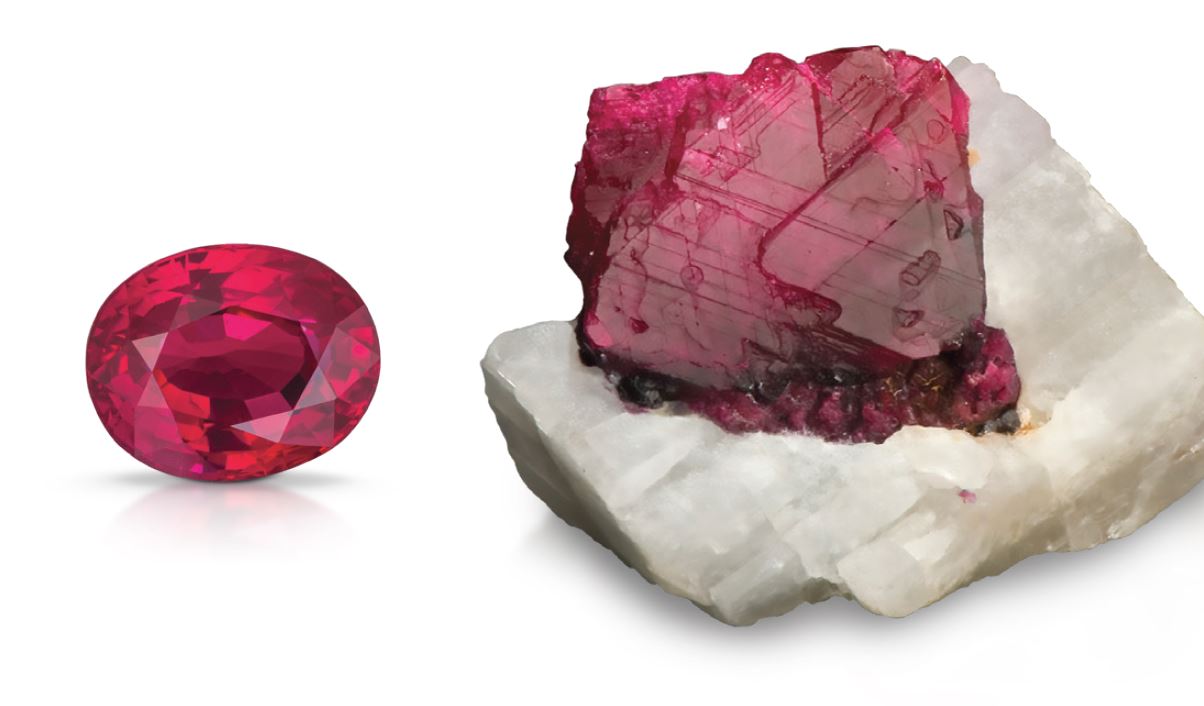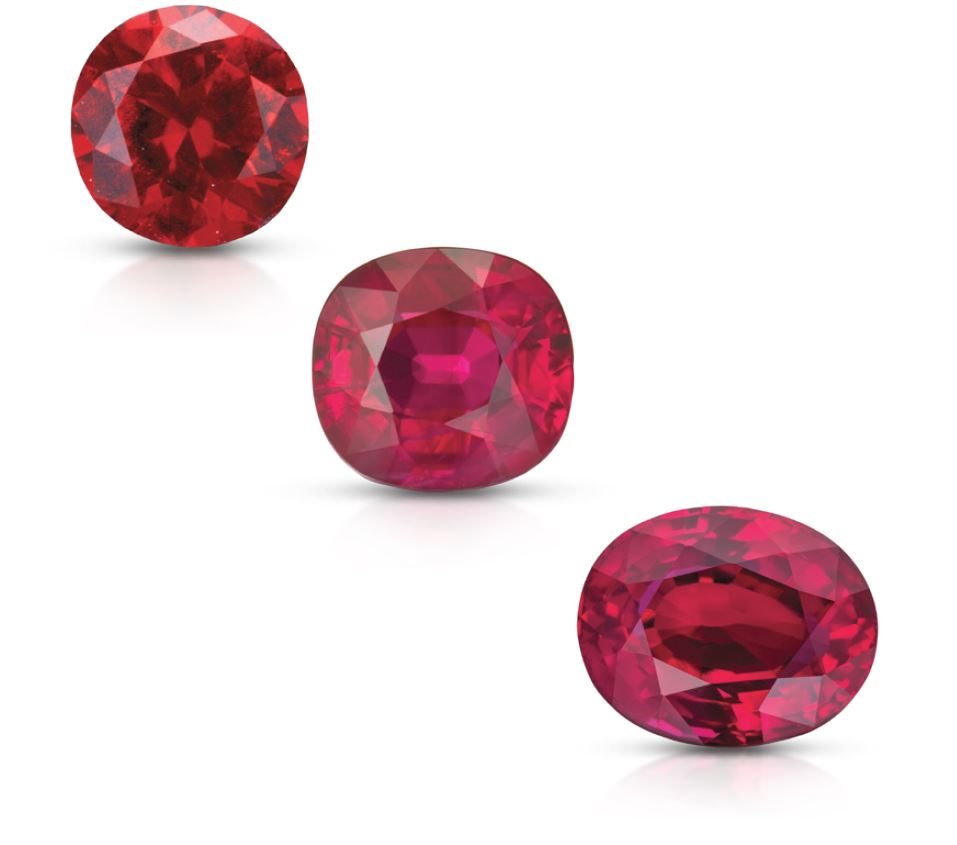RubyA symbol of wealth and nobility. Referred to as the king of precious stones, ruby is
the red variety of the mineral corundum. The name comes from the Latin “ruber,” meaning red. Red is the color of our most intense emotions—love and anger, passion and fury. It’s associated with objects of power and desire—like fast cars and red roses. Early cultures valued rubies for their similarity to the redness of the blood that flowed through their veins, and believed rubies held the power of life. Ruby retained its importance with the birth of the western world and became one of the most sought-after gems of European royalty and the upper classes. Many medieval Europeans wore rubies to guarantee health, wealth, wisdom and success in love. Color The color of ruby is caused by traces of chromium.
Color is the most significant factor affecting a ruby’s value. Rubies are available in rich red to dark red and orangey red to purplish red. The most sought-after color by collectors worldwide is a deep red sometimes with a hint of purple, called “pigeon’s blood” in the trade. Clarity Inclusion-free ruby is practically nonexistent so the
value varies with how visible the inclusions are. Inclusions can also impact a ruby’s durability, especially if there is a surface-reaching fracture. Typical clarity characteristics include thin mineral inclusions called needles. Rutile needles, or “silk,” can sometimes contribute positively to a gem’s appearance. Source The most famous ruby mines are in Myanmar (formerly
known as Burma) but rubies can also be found in Vietnam, Mozambique, Madagascar, Kenya, Tajikistan, Afghanistan and Pakistan. Treatments Heat treatment is often used to improve the color or
clarity of a ruby. Heat can also cause some fractures to “heal” in certain conditions. Lower quality material may have surface-reaching fractures filled with a glass to decrease their visibility and make the gem more transparent. |
Color is the most significant factor affecting a
ruby’s value. Fine gems are a pure, vibrant red to slightly purplish red. |
All information are courtesy of Gemological Institute of America (GIA). OR DIAMOND are not affiliated with, connected to, or associated with GIA other than selling diamonds and gemstones graded by GIA and have GIA trained staff gemologist and accredited jewelry professional on site.
Images courtesy: AF Greenwood; Bear Essentials; Evan Caplan





